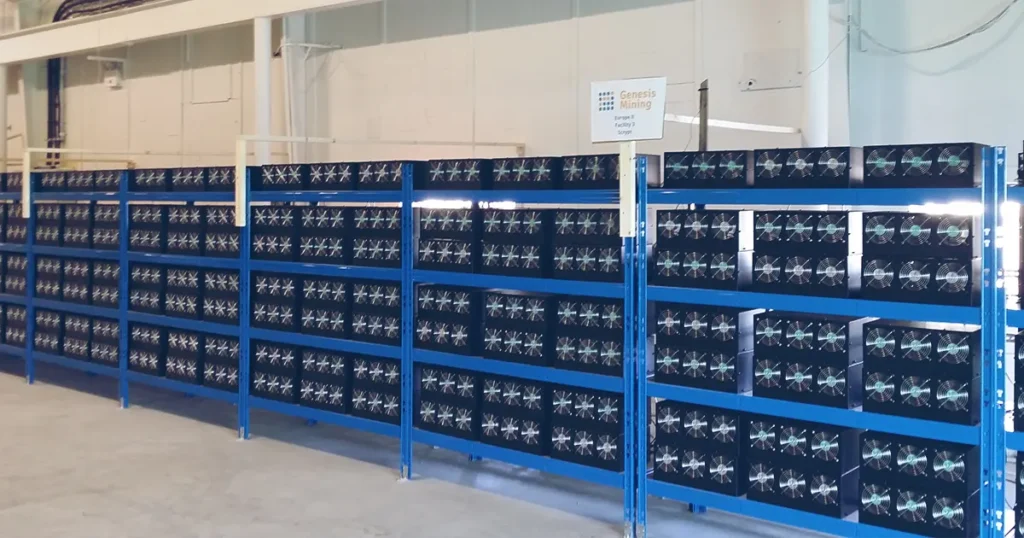5-3-2025 – Cryptocurrency mining has emerged as the backbone of digital currencies, facilitating transaction validation and maintaining blockchain security. This process, which powers cryptocurrencies like Bitcoin, is often likened to mining precious metals—both require significant resources and effort. However, beyond this basic analogy, mining plays a pivotal role in the broader financial ecosystem, with implications for decentralisation, energy consumption, and the future of digital assets.
How cryptocurrency mining works
At its core, cryptocurrency mining involves solving intricate cryptographic puzzles to verify transactions and add them to a blockchain. This mechanism, known as Proof-of-Work (PoW), demands substantial computational power. Miners compete to solve these puzzles, and the first to succeed earns transaction fees as a reward.

Bitcoin, for example, follows a predetermined mining schedule where approximately every 10 minutes, a new block is added to its blockchain. Initially, the block reward for Bitcoin miners was 50 BTC, but due to the programmed halving event that occurs roughly every four years, it has since reduced to 6.25 BTC as of the last halving. The next halving, expected in 2024, will further cut this reward to 3.125 BTC, making mining progressively more challenging and resource-intensive.
The role of miners in blockchain security
Miners serve as the network’s guardians, ensuring the integrity of transactions and preventing fraudulent activities like double-spending. By independently verifying each transaction, miners collectively maintain a decentralised and tamper-proof financial system.

Unlike traditional banking systems, where a central authority oversees financial transactions, cryptocurrencies rely on a distributed ledger. This decentralisation is crucial in eliminating the need for intermediaries, enhancing transparency, and providing financial services to regions where banking infrastructure is underdeveloped. Reports from the World Bank indicate that digital currencies, powered by mining, have contributed to financial inclusion in emerging economies where traditional banking access is limited.
The environmental and economic impact of mining
Despite its critical role, cryptocurrency mining has sparked global debates due to its high energy consumption. According to the Cambridge Centre for Alternative Finance, Bitcoin mining alone consumes more electricity annually than some small countries, raising sustainability concerns. Governments and environmental organisations have called for energy-efficient alternatives, leading to the rise of Proof-of-Stake (PoS) and other eco-friendly consensus mechanisms.

Countries such as China have imposed strict regulations or outright bans on cryptocurrency mining due to its energy demands, while nations like El Salvador and Canada have explored renewable energy sources, such as geothermal and hydroelectric power, to sustain mining operations with reduced environmental impact.
Is Cryptocurrency mining still profitable?
The profitability of mining depends on multiple factors, including electricity costs, hardware efficiency, and the market value of the mined cryptocurrency. With increasing competition and reduced block rewards, individual miners face diminishing returns unless they operate on a large scale or use cost-effective energy solutions.

However, mining remains a lucrative venture for those who adapt to changing conditions. Large-scale mining farms leverage low-cost electricity sources, while innovations such as liquid cooling systems and AI-powered mining optimisation are emerging to enhance efficiency.
The future of cryptocurrency mining
As blockchain technology evolves, the future of cryptocurrency mining may shift towards sustainability and efficiency. Regulatory frameworks will likely shape mining operations, with governments exploring carbon-neutral policies and incentives for eco-friendly practices.
Additionally, advancements in quantum computing and decentralised finance (DeFi) could revolutionise the mining landscape, potentially introducing new consensus mechanisms that maintain security while reducing energy consumption. The coming years will be crucial in determining whether mining remains a viable model or transitions towards more sustainable alternatives.
Cryptocurrency mining has undergone significant transformations, from an early enthusiast-driven activity to a multi-billion-dollar industry. As technological innovations and regulations reshape the sector, miners must adapt to a rapidly changing digital economy, ensuring blockchain networks remain secure and accessible to all.


